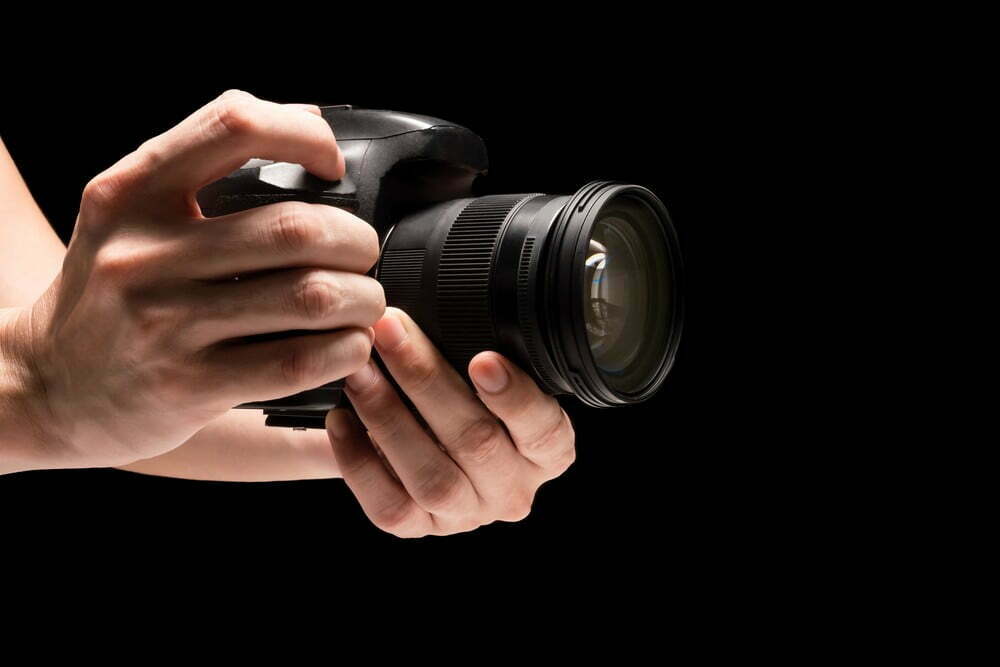If you’ve had the best digital camera for a while, you have no doubt become accustomed to most of the standard features and functionalities. But what about some of the more experimental features? In other words, you may be wondering how to get a long exposure on a digital camera. Don’t worry. We have got you covered.
KEY TAKEAWAYS:
- Long exposures create ghostly ethereal digital images that are perfect for night photography.
- To begin, place your DSLR camera on a tripod, activate the long exposure setting, and apply a filter.
- Pay attention to the weather during a long exposure, as the exposure itself could take a fair bit of time before it is complete.
What is a Long Exposure?
As the name suggests, a long exposure is when a camera’s lens is, well, exposed to the subject for a longer-than-average period of time. This creative technique is especially popular with night photographers.
Insider Tip
As the name suggests, a long exposure is when a camera’s lens is, well, exposed to the subject for a longer-than-average period of time.
Why Perform a Long Exposure?
Long exposures can create a gorgeous ethereal effect that has long been sought-after by serious shutterbugs. You are essentially leaving the lens on a subject for a long period of time, so the end result ends up ghostly and a combination of different time stamps. After getting quality images, you may want to share them with friends. As such, it is crucial to learn how to print pictures from a digital camera.
How to Get a Long Exposure on a Digital Camera
The specifics may vary depending on the make and model of your camera, so we have tried to make these guidelines as universal as possible.
Get a Tripod
Insider Tip
Long exposures can create a gorgeous ethereal effect that has long been sought-after by serious shutterbugs.
You will almost always need a tripod to take a long exposure. These exposures can take hours, after all, and you don’t want to stand in the same exact position for long periods of time. You’ll get aches. You’ll get shaky. Make sure you use a sturdy tripod that can integrate with your camera.
Make Sure Your Camera Has a Long Exposure Function
Most, though not all, mirrorless DSLR cameras should have a long exposure function buried in the settings menu or accessible via a button on the exterior. Activate the long exposure, set your camera on the tripod, lock the image, lock in the focus and zoom, and begin waiting. You may also want to add a filter, depending on how long the intervals are between your exposures. Also, remember to use a low shutter speed. We recommend setting your shutter speed to somewhere between ten and 20 seconds.
Pay Attention to the Weather
This may seem like an odd one but if you are shooting a long exposure outdoors, you will need to pay attention to the weather. Sudden rain, for instance, could not only ruin your shot but also your camera. A cloudy day can make for a really cool long exposure, as the clouds will blend together in the final image to create a snazzy effect. Lastly, to ensure you don’t lose your pictures, it is ideal to learn how to get back deleted photos on a digital camera, in case you accidentally delete them.
Warning
Make sure you use a sturdy tripod that can integrate with your camera.
F.A.Q.
What is a long exposure commonly used for?
Due to the unique nature of the creative effect, long-exposure digital images are typically reserved for landscape photography and night landscape photography.
What is the longest exposure ever?
Believe it or not, the longest exposure on record is over four years. German artist Michael Wesely accomplished this feat.
What shutter speed do you need for a long exposure?
Typically, you will want to set your shutter speed between ten and 20 seconds. This will vary depending on what kind of effect you are going for.
STAT: Long exposure photography has often been used by astrologers to capture the movement of stars. (source)



































![Best Point and Shoot Camera in [year] ([month] Reviews) 27 Best Point and Shoot Camera in 2026 (January Reviews)](https://www.gadgetreview.dev/wp-content/uploads/Nikon-Coolpix-B500.jpg)
![Best Underwater Camera in [year] ([month] Reviews) 28 Best Underwater Camera in 2026 (January Reviews)](https://www.gadgetreview.dev/wp-content/uploads/best-underwater-camera-image.jpg)
![Best Digital Cameras in [year] ([month] Reviews) 29 Best Digital Cameras in 2026 (January Reviews)](https://www.gadgetreview.dev/wp-content/uploads/what-is-resolution-on-digital-camera-1.jpg)
![Best Digital Camera Docking Stations in [year] 30 Best Digital Camera Docking Stations in 2026](https://www.gadgetreview.dev/wp-content/uploads/best-digital-camera-docking-stations-image.jpg)
![Best Vlogging Camera in [year] ([month] Reviews) 31 Best Vlogging Camera in 2026 (January Reviews)](https://www.gadgetreview.dev/wp-content/uploads/best-vlogging-camera-image.jpg)
![Best Mirrorless Camera in [year] ([month] Reviews) 32 Best Mirrorless Camera in 2026 (January Reviews)](https://www.gadgetreview.dev/wp-content/uploads/best-mirrorless-camera-image.jpg)
![Best GoPro in [year] ([month] Reviews) 33 Best GoPro in 2026 (January Reviews)](https://www.gadgetreview.dev/wp-content/uploads/best-gopro-image.jpg)
![Best Digital Camera Tripods in [year] 34 Best Digital Camera Tripods in 2026](https://www.gadgetreview.dev/wp-content/uploads/best-digital-camera-tripods-image.jpg)
![Best Canon Digital Cameras in [year] 35 Best Canon Digital Cameras in 2026](https://www.gadgetreview.dev/wp-content/uploads/best-canon-digital-cameras-image.jpg)
![Best Polaroid Digital Cameras in [year] 36 Best Polaroid Digital Cameras in 2026](https://www.gadgetreview.dev/wp-content/uploads/best-polaroid-digital-cameras-image.jpg)
![Best Small Digital Camera Cases in [year] 37 Best Small Digital Camera Cases in 2026](https://www.gadgetreview.dev/wp-content/uploads/best-small-digital-camera-case-image.jpg)
![Best Digital Camera USB Cables in [year] 38 Best Digital Camera USB Cables in 2026](https://www.gadgetreview.dev/wp-content/uploads/best-digital-camera-usb-cable-image.jpg)
![Best Digital Camera Bags in [year] 39 Best Digital Camera Bags in 2026](https://www.gadgetreview.dev/wp-content/uploads/best-digital-camera-bag-image.jpg)
![Best Sony Digital Cameras in [year] 40 Best Sony Digital Cameras in 2026](https://www.gadgetreview.dev/wp-content/uploads/best-sony-digital-cameras-image.jpg)
![Best Panasonic Digital Cameras in [year] 41 Best Panasonic Digital Cameras in 2026](https://www.gadgetreview.dev/wp-content/uploads/best-panasonic-digital-cameras-image.jpg)
![Best Digital Camera Accessories in [year] 42 Best Digital Camera Accessories in 2026](https://www.gadgetreview.dev/wp-content/uploads/best-digital-camera-accessories-image.jpg)
![Best Kodak Digital Cameras in [year] 43 Best Kodak Digital Cameras in 2026](https://www.gadgetreview.dev/wp-content/uploads/best-kodak-digital-cameras-images.jpg)
![Best Video Cameras in [year] ([month] Reviews) 44 Best Video Cameras in 2026 (January Reviews)](https://www.gadgetreview.dev/wp-content/uploads/best-video-cameras-image.jpg)
![Best Compact Cameras in [year] 45 Best Compact Cameras in 2026](https://www.gadgetreview.dev/wp-content/uploads/best-compact-camera-image.jpg)
![Best Digital Cameras with Wifi in [year] 46 Best Digital Cameras with Wifi in 2026](https://www.gadgetreview.dev/wp-content/uploads/best-digital-camera-with-wifi-image.jpg)



















